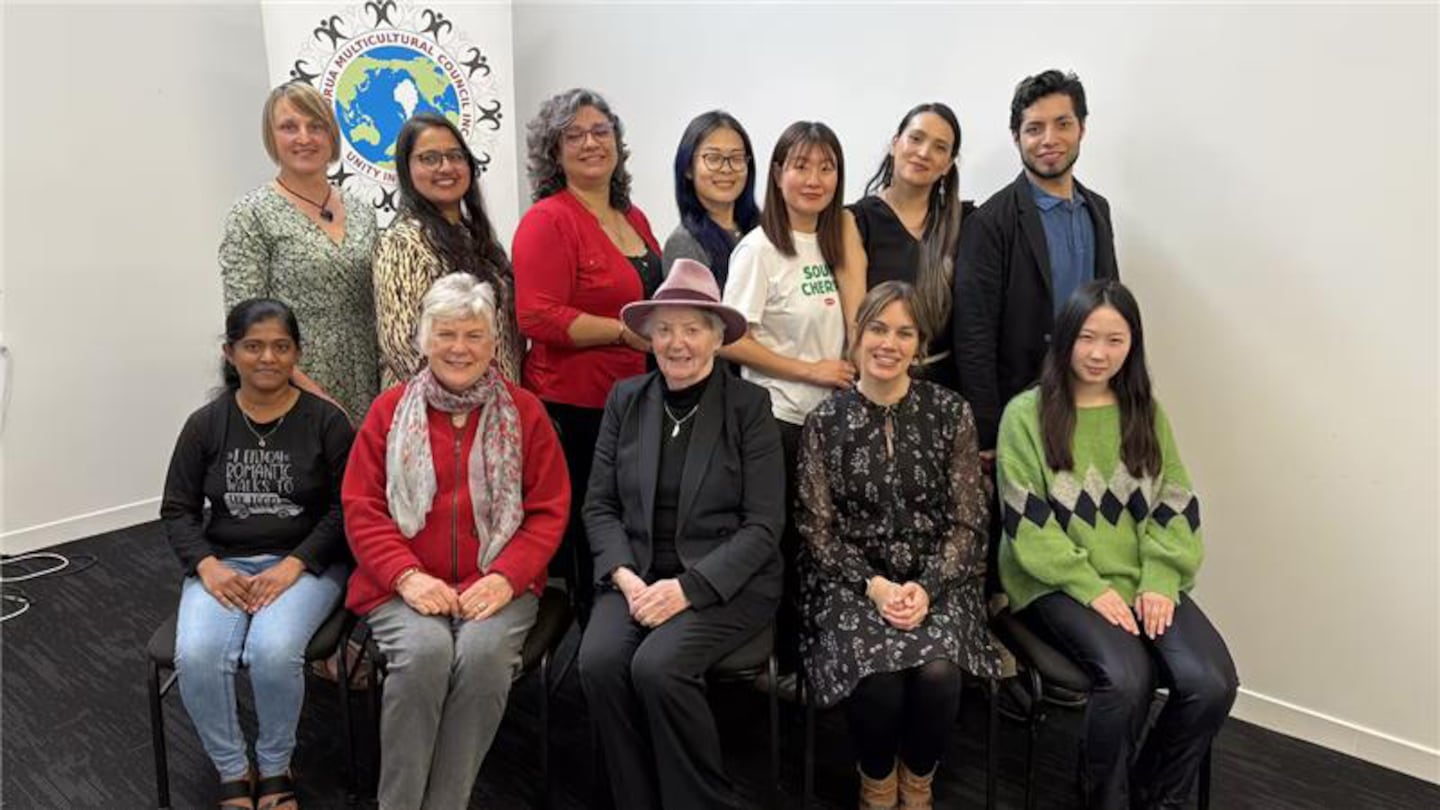This article was first published by NZME.
After 10 weeks of learning, connection and cultural discovery, a group of migrants in Rotorua have completed a bilingual course in English and te reo Māori, said to be the first of its kind in Aotearoa.
The pilot programme, a collaboration between Speech New Zealand, Te Tatau o Te Arawa and the Rotorua Multicultural Council, brought together people from 10 countries to build confidence in speaking, presenting and connecting through both languages, a joint media release from the three organisations said.
The students, from Chile, Sri Lanka, India, Argentina, China, Colombia, Russia and South Korea, recently sat their final exams.
Each participant delivered an informative presentation on a Māori person, story or influential figure; shared their own pepeha in te reo; read aloud a related text; and completed an impromptu speaking task such as a role-played conversation or interview.
Students were assessed by a Speech NZ examiner, earning an Intermediate Certificate in English Language and Communication — a valuable qualification that supports future employment and study opportunities.
Rotorua Multicultural Council president Margriet Theron said the course was helping to build stronger relationships between Māori and migrants in Rotorua.
“We have done that in the past through visits to marae and waka trips on Lake Rotorua. Teaching migrants their pepeha so that they can introduce themselves in te reo at meetings and asking them to give talks about Te Arawa heroes supports their successful settlement in our city.”
Theron said that, by the end of the course, they would all know about important Te Arawa figures such as Sir Howard Morrison, Maggie Papakura and Inez Kingi, and understand the history behind Māori street names such as Arawa and Haupapa.
“We are grateful for the contribution made to the course by Dr Anaha Hiini of Kōtihi Reo Consultants, who guided the students through the preparation of their pepeha.”
Students also forged friendships, built confidence, and strengthened their connection to local migrant support services through the Rotorua Multicultural Council.
Speech NZ executive officer Helena Coulton said the success of the pilot proved combining English language learning with local Māori culture was “a model worth expanding”.
“By engaging migrants in local mātauranga [knowledge], we are empowering them with a deeper sense of belonging and connection to the whenua, while equipping them with the skills and confidence to add their own voices to the fabric of their communities.
“We’re already exploring how this model could be adapted for other regions, each rooted in their local iwi and stories.”
Funding for the course was provided by Immigration New Zealand via Te Tatau o Te Arawa, with scholarships from the Geyser Community Foundation covering student examination fees.
Organisers hoped to secure future funding to offer the course again, building on the strong success of this first intake.
By Rotorua Daily Post, NZ Herald.



